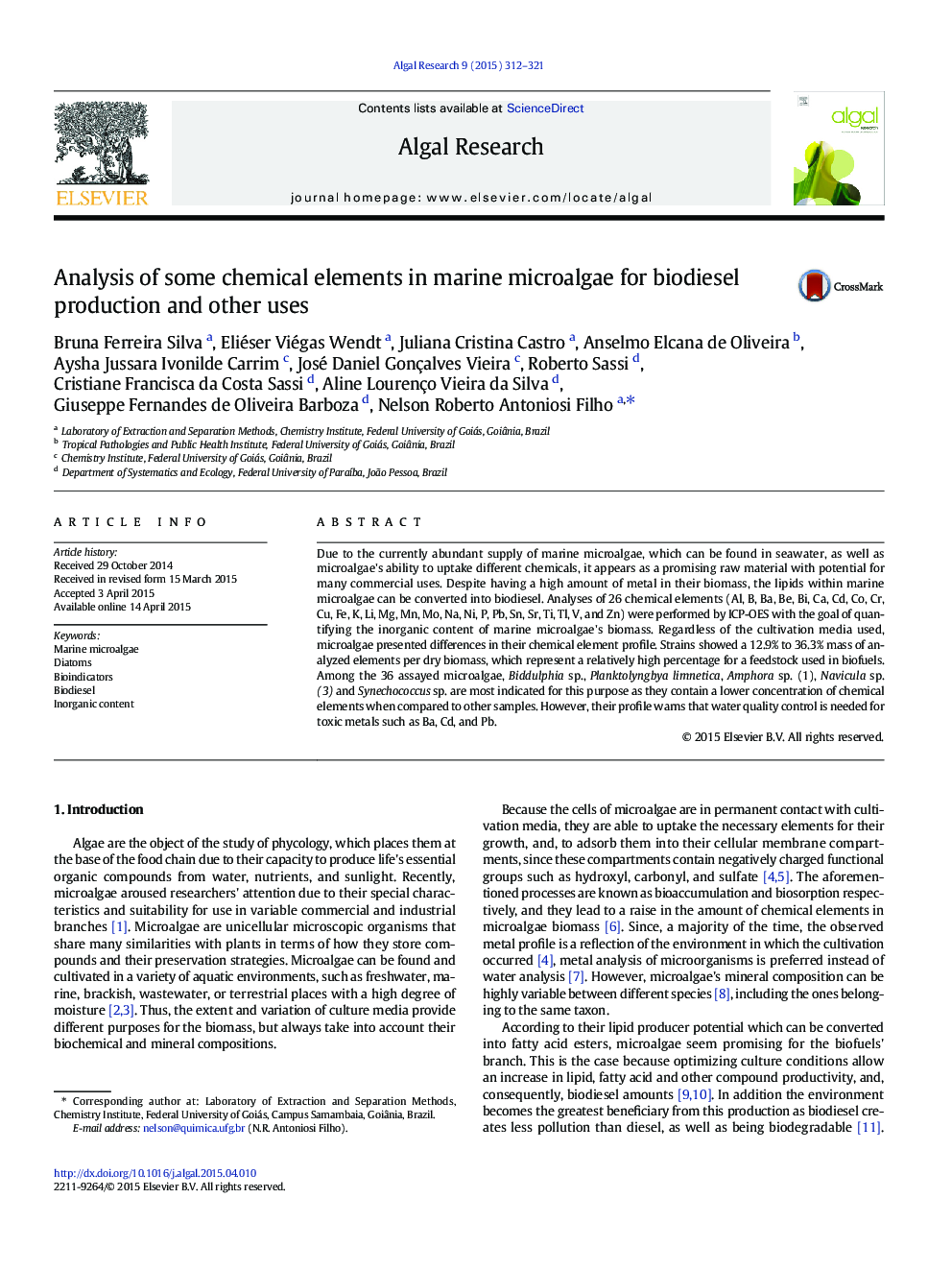| Article ID | Journal | Published Year | Pages | File Type |
|---|---|---|---|---|
| 8088242 | Algal Research | 2015 | 10 Pages |
Abstract
Due to the currently abundant supply of marine microalgae, which can be found in seawater, as well as microalgae's ability to uptake different chemicals, it appears as a promising raw material with potential for many commercial uses. Despite having a high amount of metal in their biomass, the lipids within marine microalgae can be converted into biodiesel. Analyses of 26 chemical elements (Al, B, Ba, Be, Bi, Ca, Cd, Co, Cr, Cu, Fe, K, Li, Mg, Mn, Mo, Na, Ni, P, Pb, Sn, Sr, Ti, Tl, V, and Zn) were performed by ICP-OES with the goal of quantifying the inorganic content of marine microalgae's biomass. Regardless of the cultivation media used, microalgae presented differences in their chemical element profile. Strains showed a 12.9% to 36.3% mass of analyzed elements per dry biomass, which represent a relatively high percentage for a feedstock used in biofuels. Among the 36 assayed microalgae, Biddulphia sp., Planktolyngbya limnetica, Amphora sp. (1), Navicula sp. (3) and Synechococcus sp. are most indicated for this purpose as they contain a lower concentration of chemical elements when compared to other samples. However, their profile warns that water quality control is needed for toxic metals such as Ba, Cd, and Pb.
Related Topics
Physical Sciences and Engineering
Energy
Renewable Energy, Sustainability and the Environment
Authors
Bruna Ferreira Silva, Eliéser Viégas Wendt, Juliana Cristina Castro, Anselmo Elcana de Oliveira, Aysha Jussara Ivonilde Carrim, José Daniel Gonçalves Vieira, Roberto Sassi, Cristiane Francisca da Costa Sassi, Aline Lourenço Vieira da Silva,
